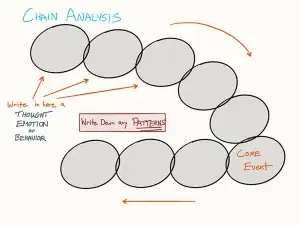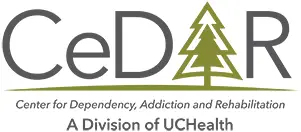ADDICTION SCIENCE
Play the audio version of this article:
‘Functional analysis” is one of the therapy tools used towards the beginning of substance abuse treatment. This tool is for motivational purposes and involves learning about substance use patterns in a deeper way. One of the most important reasons to work with a board-certified addiction professional is that these clinicians tend to be very ‘unafraid’ of the topic material. On the contrary, it is common to find a medical physician or other private therapists who would take the discussion around drugs or alcohol at face value, fail to dig deeper into the problem, and hope in subtle ways to move on to other health topics. A classic conversation would go like this:
- Physician: “So do you use drugs or alcohol?”
- Patient: “Yeah, sometimes.”
- Physician: “You don’t use excessively, do you? You don’t think you have a problem?”
- Patient: “Nah, I’m fine.”
From a psychological perspective, there is mutual collusion taking place in this office. The addicted person is guarded against changing and the physician is uncomfortable helping to build a change process. Both parties make somewhat of a ‘pact’ that they will not dig much deeper into the discussion of substance use. Both are able to move on without the awkwardness of addressing real addiction.
The functional analysis is walking through the minutia of substance use. BThe outline below shows the necessary steps. You could build the analysis on your own or with your provider.
Step 1: Build the Basic Calendar
Because it can be often too complicated to understand everything involved in substance use, the discussion usually starts in a more tangible way: What’s your substance use over the past month? You’ll start with a blank calendar of the prior month and use pen/pencil to mark on ‘X’ in all days in which you used substances. Most people can remember the past month and some of the events involved. By checking off all of the days with active substance use, you and your provider can start to learn what your addiction actually looks like.
Step 2: List the Important Numbers
For each checked day in the past month, write down some important data points as best you could remember. We would start by listing:
- About how many drinks or how much drug use in total that day?
- What time did you start using in the day?
- Any significant events you remember (i.e. parties, dinners, conflicts)?
- Do you remember the full day or did you blackout from using?
- Can you list any emotions that stand out from that day?
Step 3: Pick One of the Days for a Chain Analysis
A chain analysis is a diagram to build insight into your thoughts, emotions, or behaviors connected to any given day. Chain analyses are used to help better understand important events in your life and to learn from these events. Many times a person will demonstrate patterns in a repetitive fashion, but not have much thought as to how the pattern actually unfolds. A chain analysis exercise can be wonderfully helpful in this situation.
For each circle in the chain, you can list one of three general things:
- A Thought
- An Emotion
- A Behavior

As you progress through the chain, notice the lower right circle. This circle would be the ‘core event’ of the day. An example could be an argument with a loved one or some consequence attached to the substance use. It is common to remember those core events, but not everything leading up to that event. We use the links of the chain to better understand.
Chain Exercise
Try and do one of these chain exercises for yourself around your most recent day of heavy substance use. List out what you think might be the core event and list some of the thoughts, emotions, and behaviors in the chains leading up to this. Finally, list some of the thoughts, emotions, and behaviors that followed the core event.
After you have completed a chain for this day (it’s sensible to keep it to just a 24 hour period), try and list one or two conclusions you can draw from the events. In other words, what can you take home and learn about yourself from this chain? Examples could be:
- “On days in which my ex- has the kids, I tend to drink more.”
- “Whenever I use drugs, I sleep through the whole next day and miss work.”
- “I tend to drink more than usual whenever I hang out with (insert friend here).”
Deepening the Dialogue
One of the main reasons to use a functional analysis is to start a deeper dialogue about addiction and what it actually looks like. You can expand on this exercise for yourself and include numerous other topics. One example would include time spent doing other things connected to drug use, but not the use itself (such as spending time at the pawn shop to find money for heroin). Another would be days in which you didn’t use, but spent the day hung-over and not meeting your base responsibilities for the day. Many people are often surprised once their actual substance use patterns are all on the table. This can be an eye-opener for people in terms of how much alcohol or drug use has actually taken over their lives.
If you can put it on the table and be honest as to the extent of the addiction, you can address it! Examples such as the functional analysis are commonly used in addiction treatment. It is so important for people with active addiction issues to seek professional help from an addiction specialist. The dialogue becomes more honest, and therefore more helpful.
